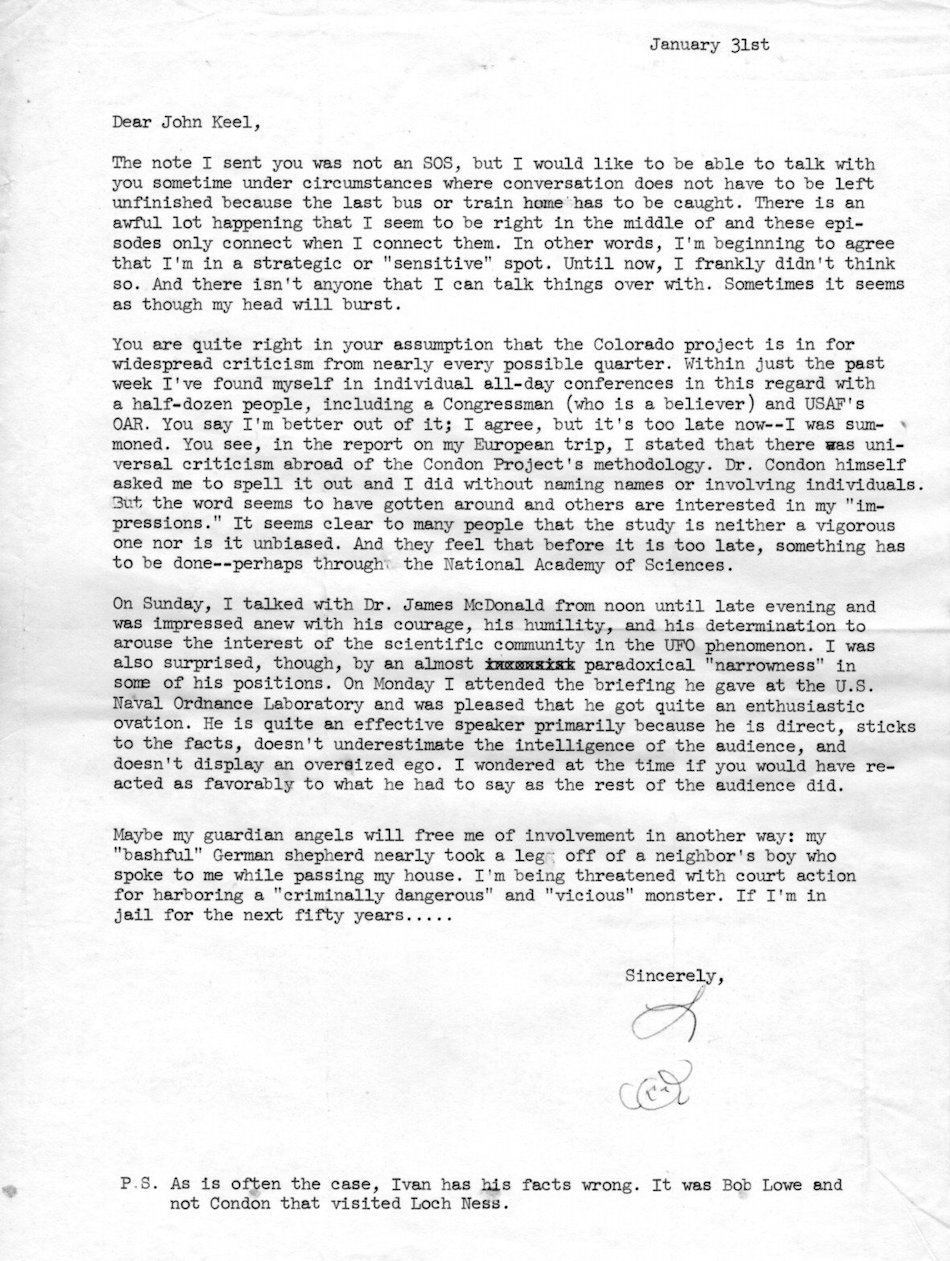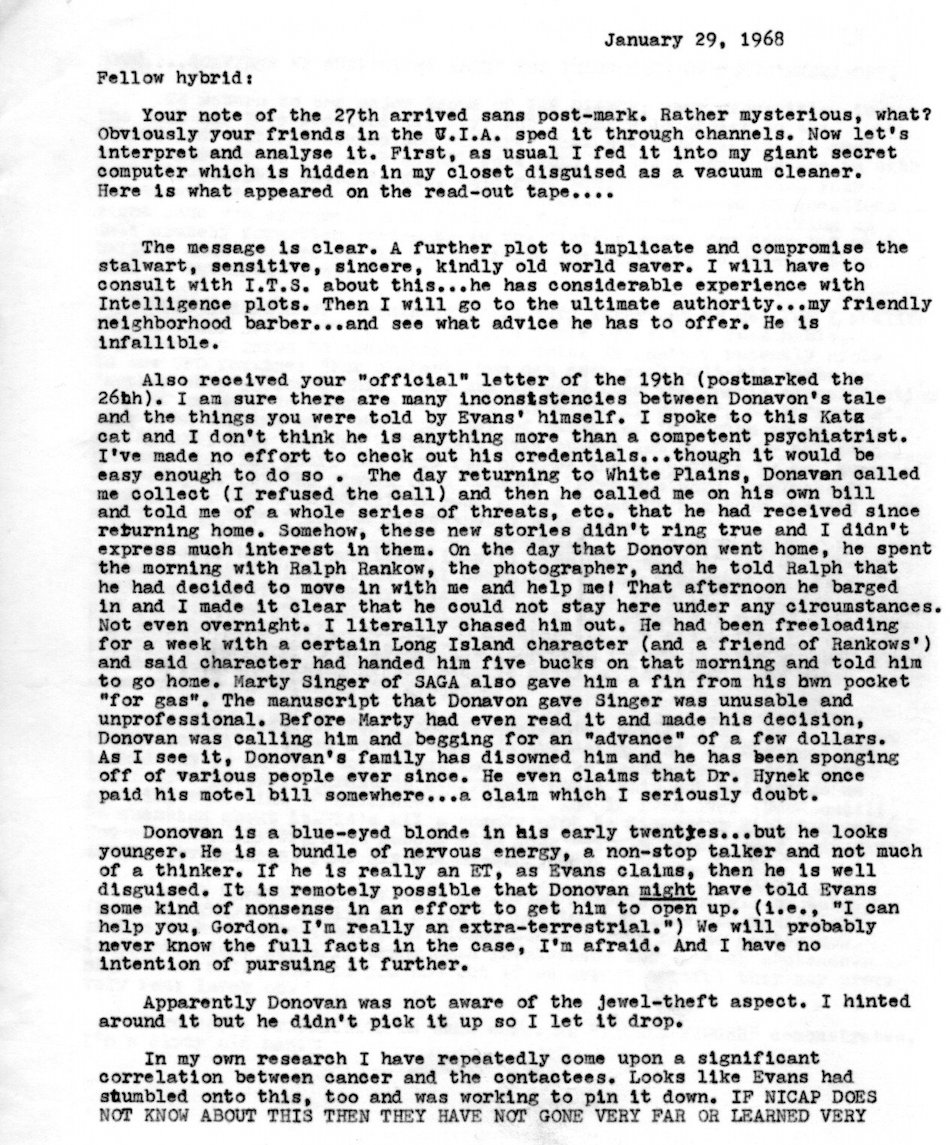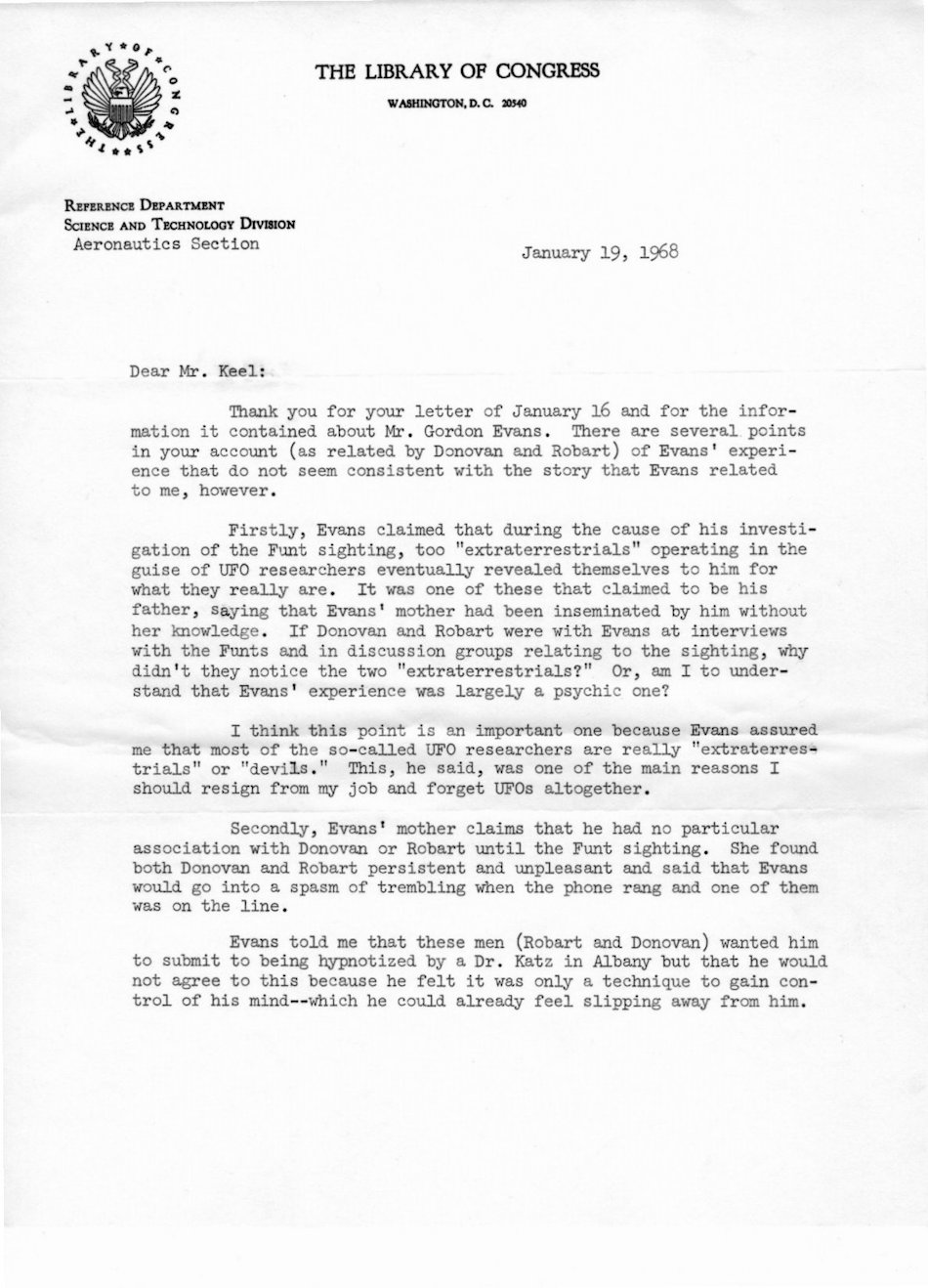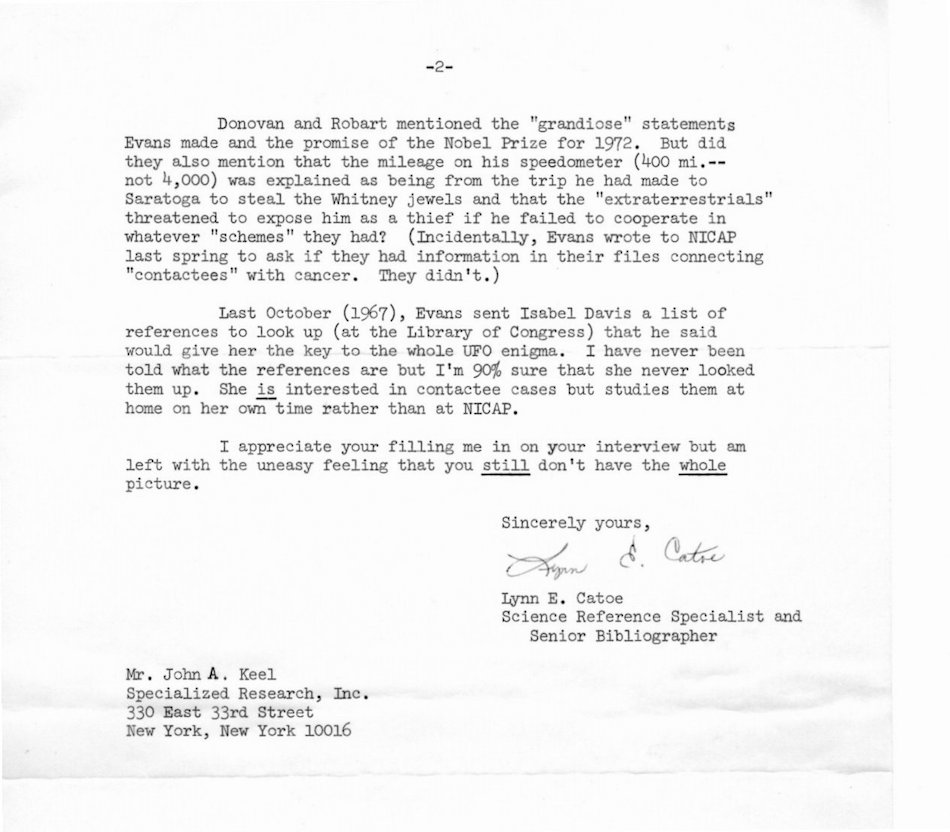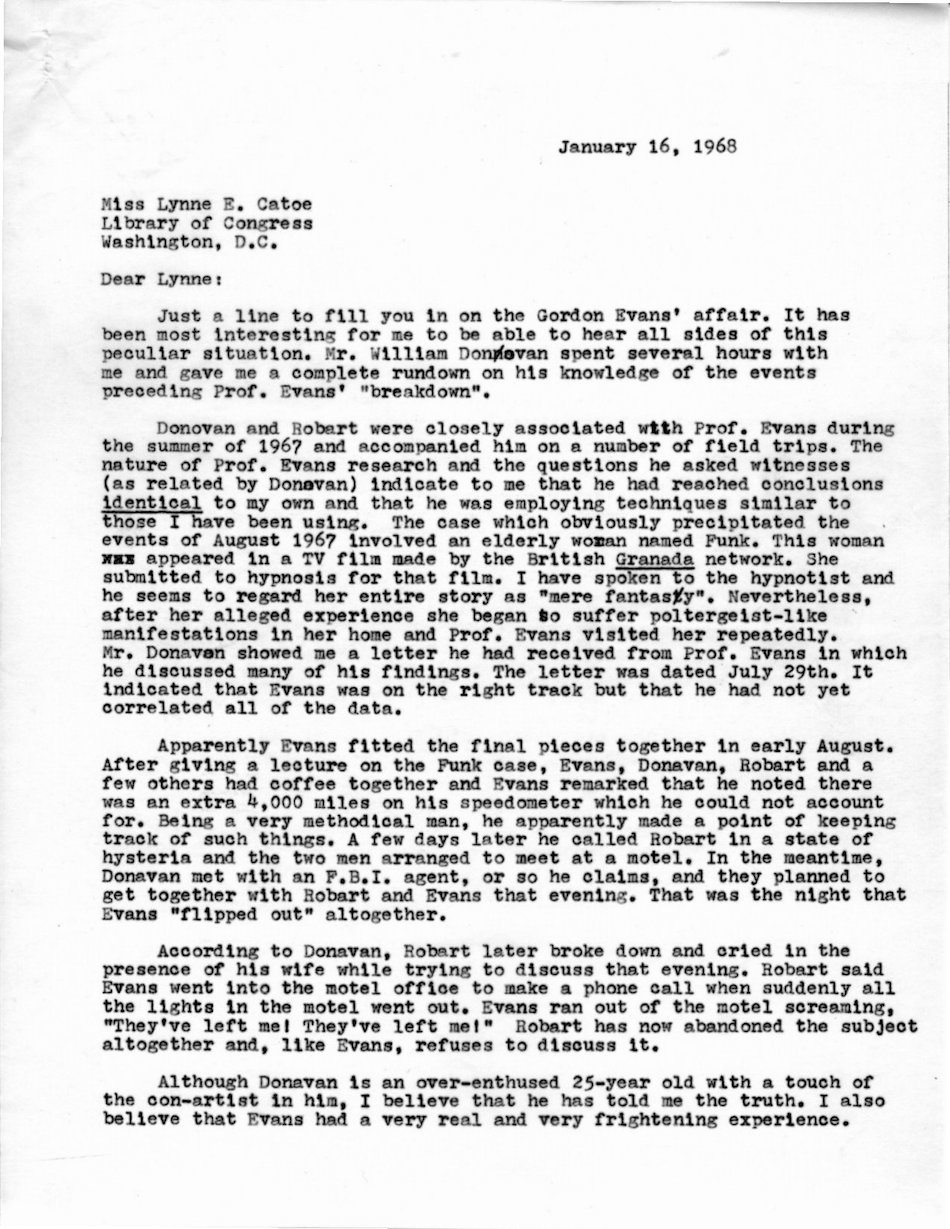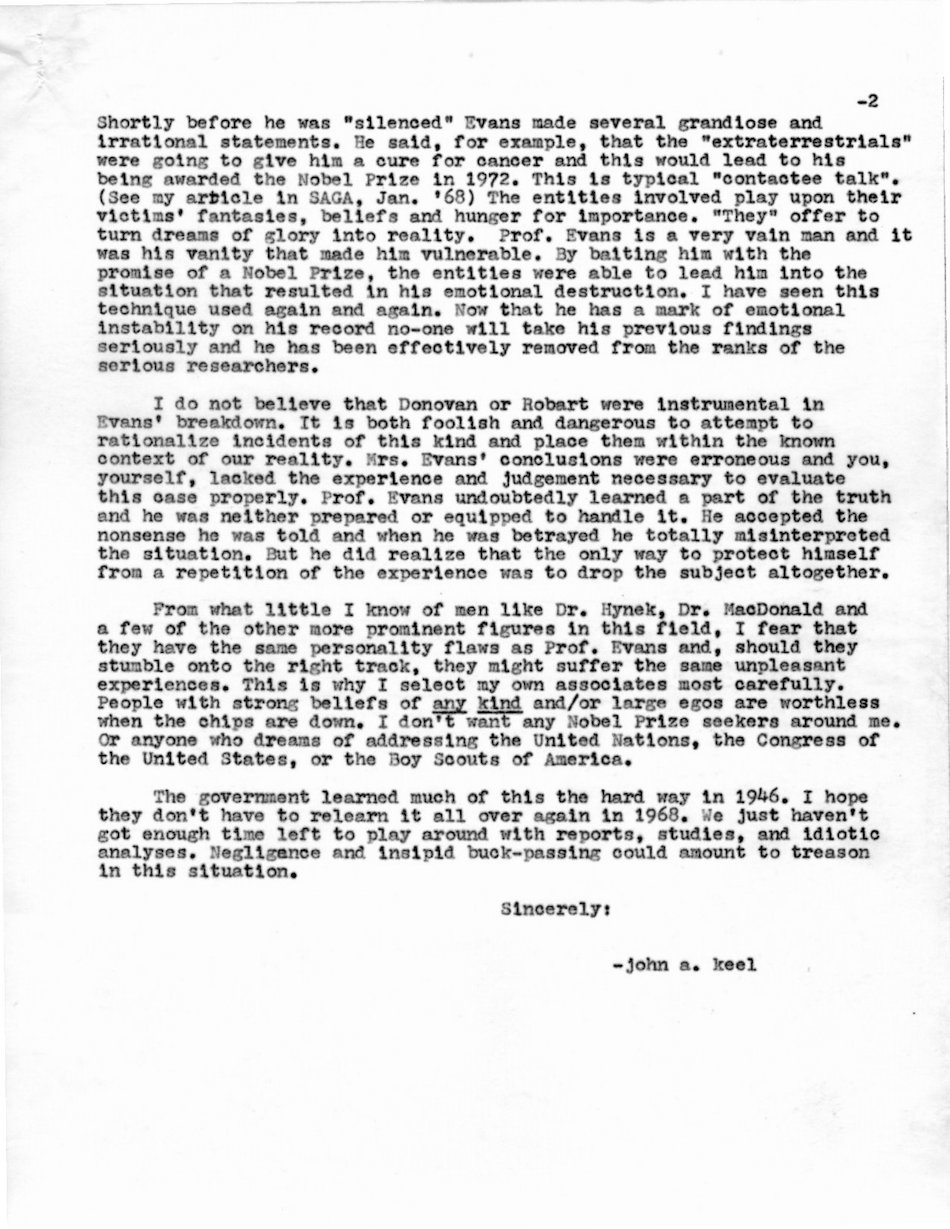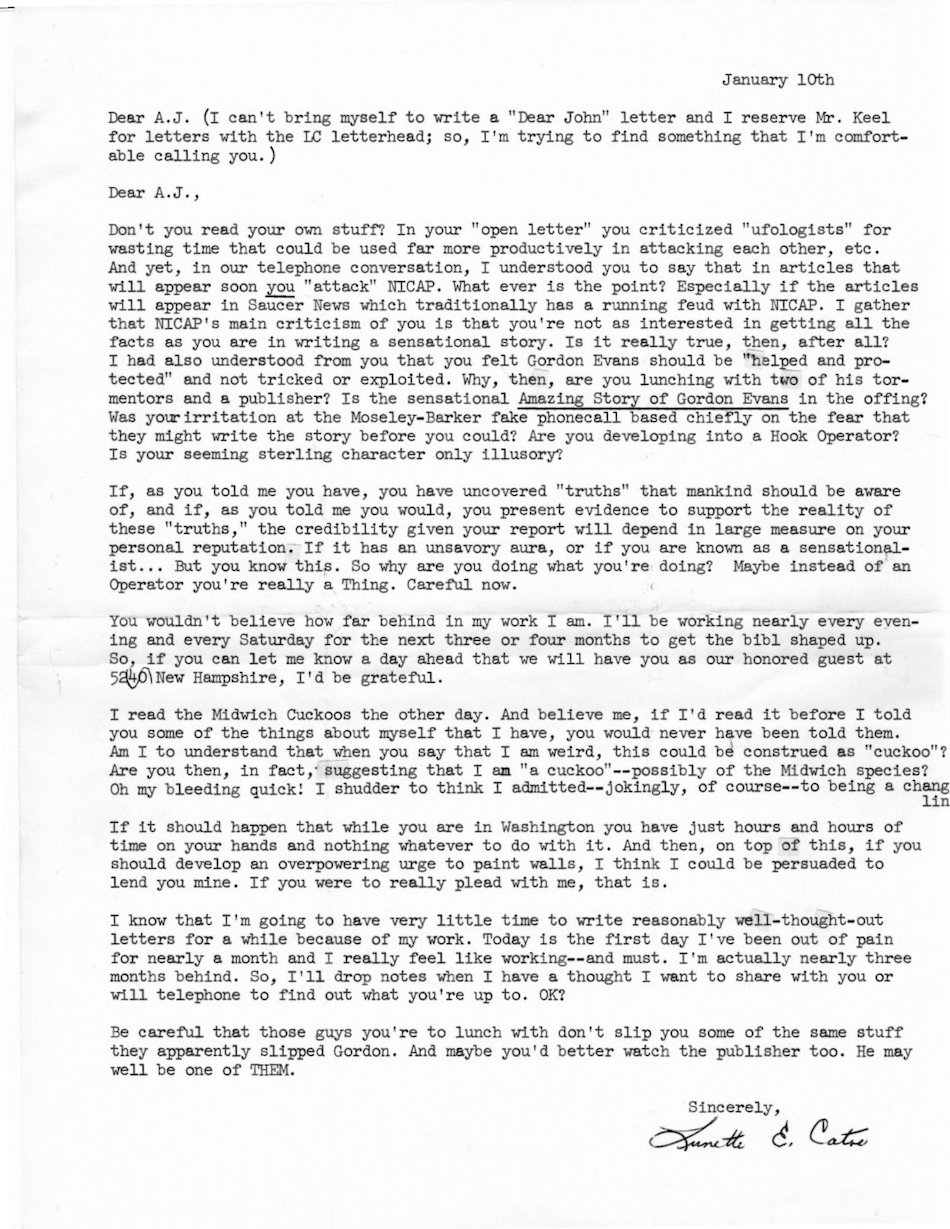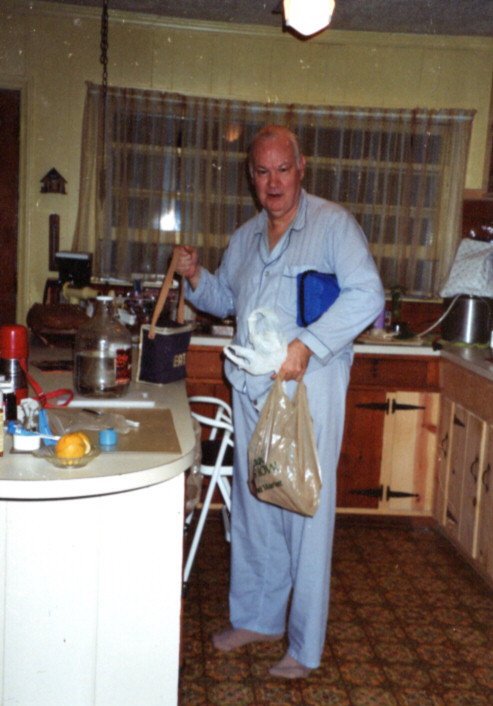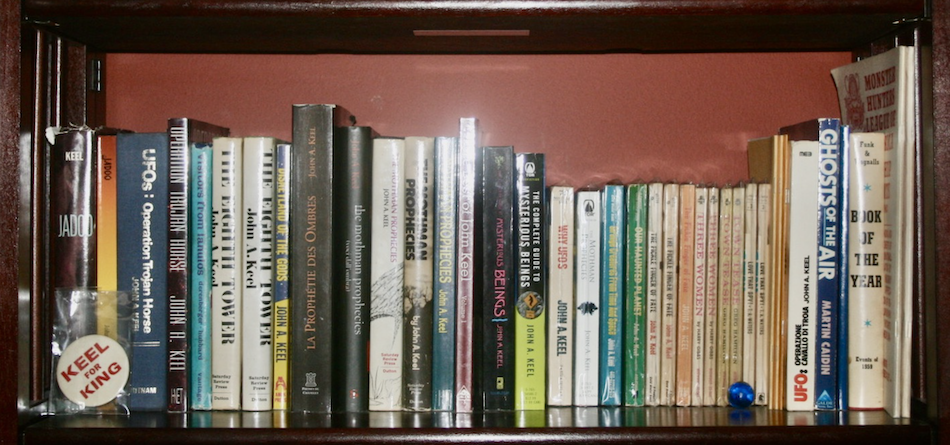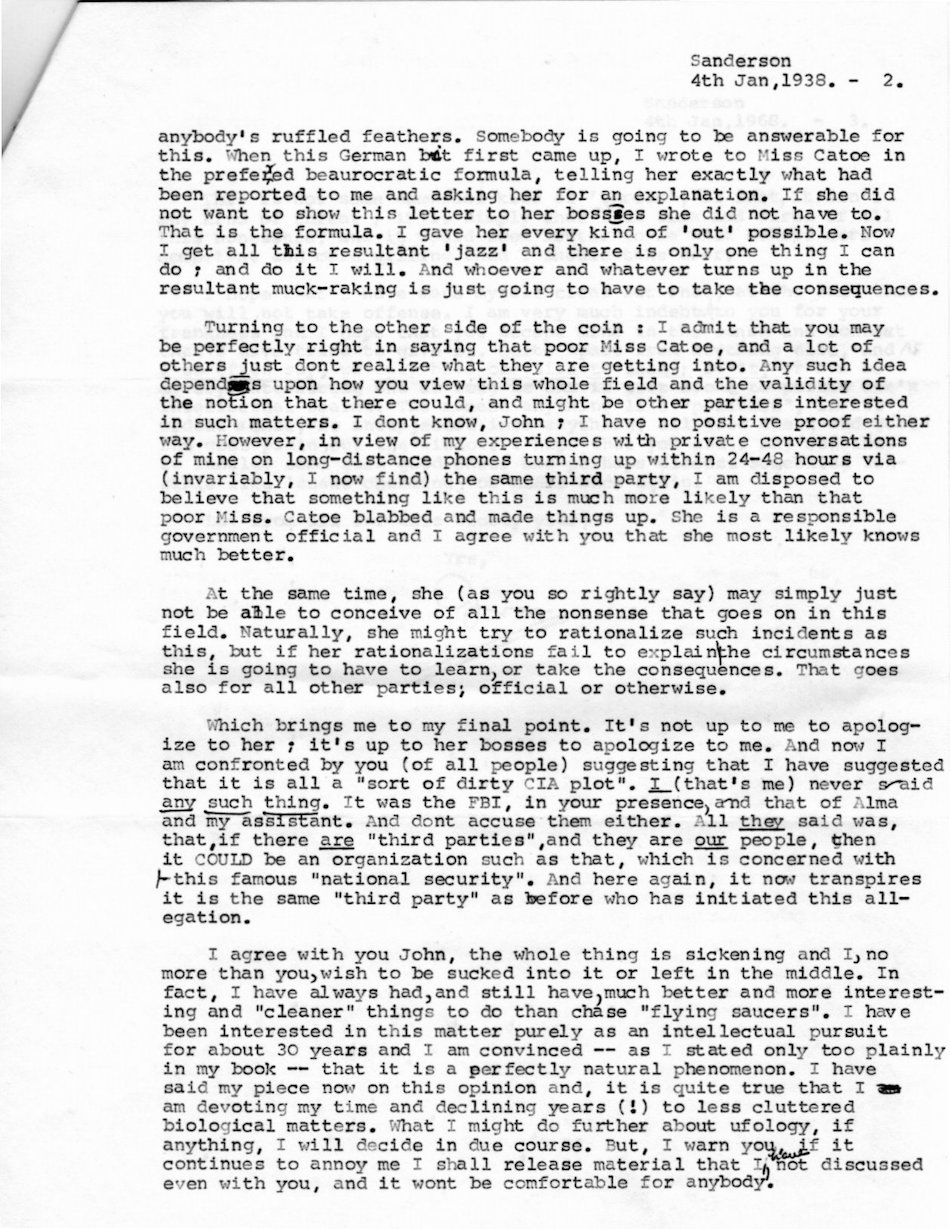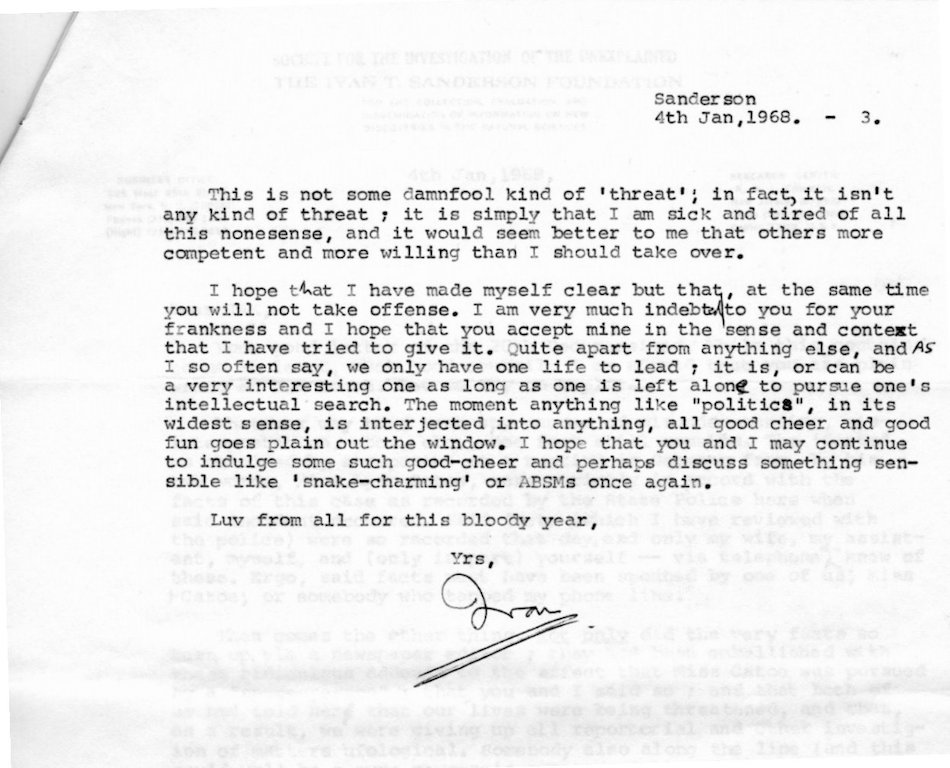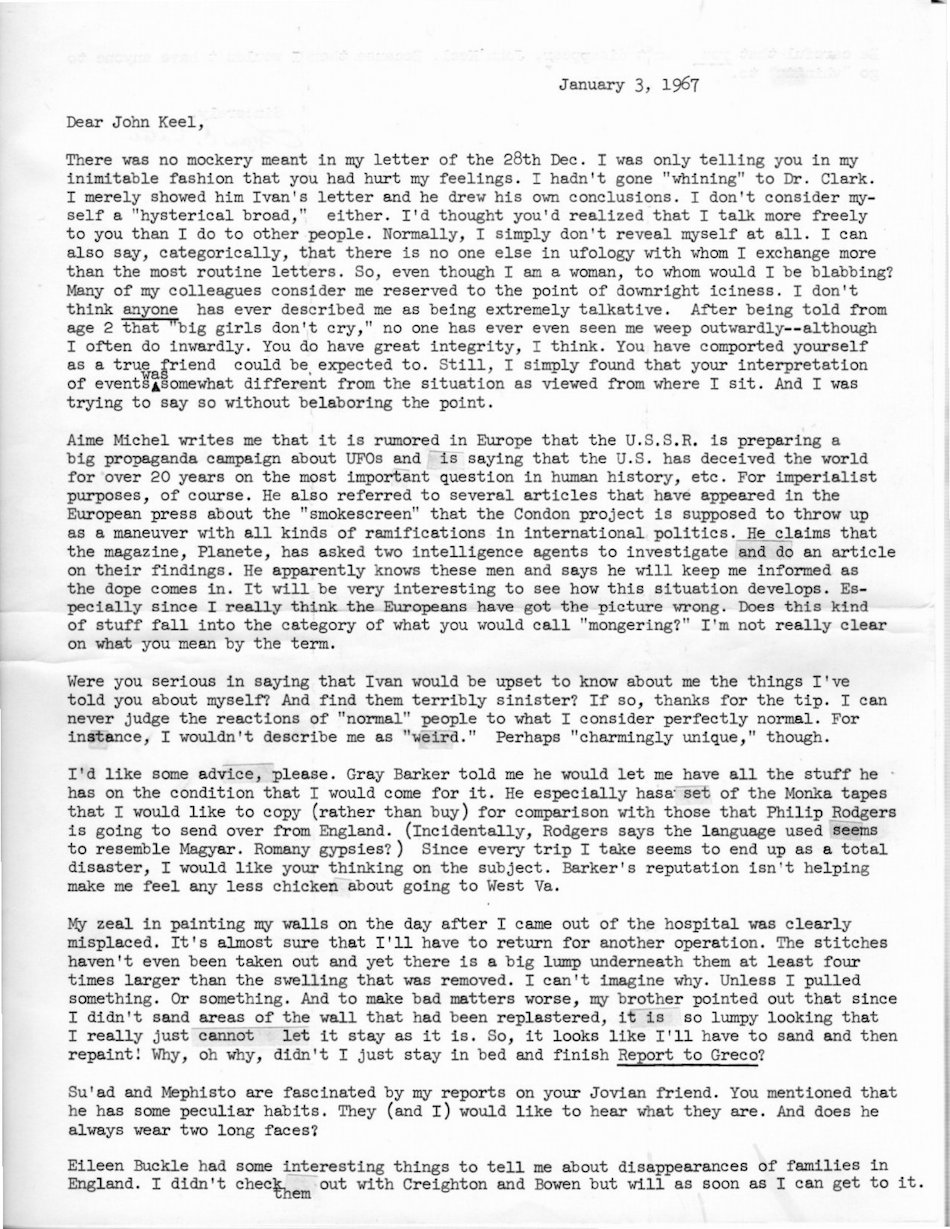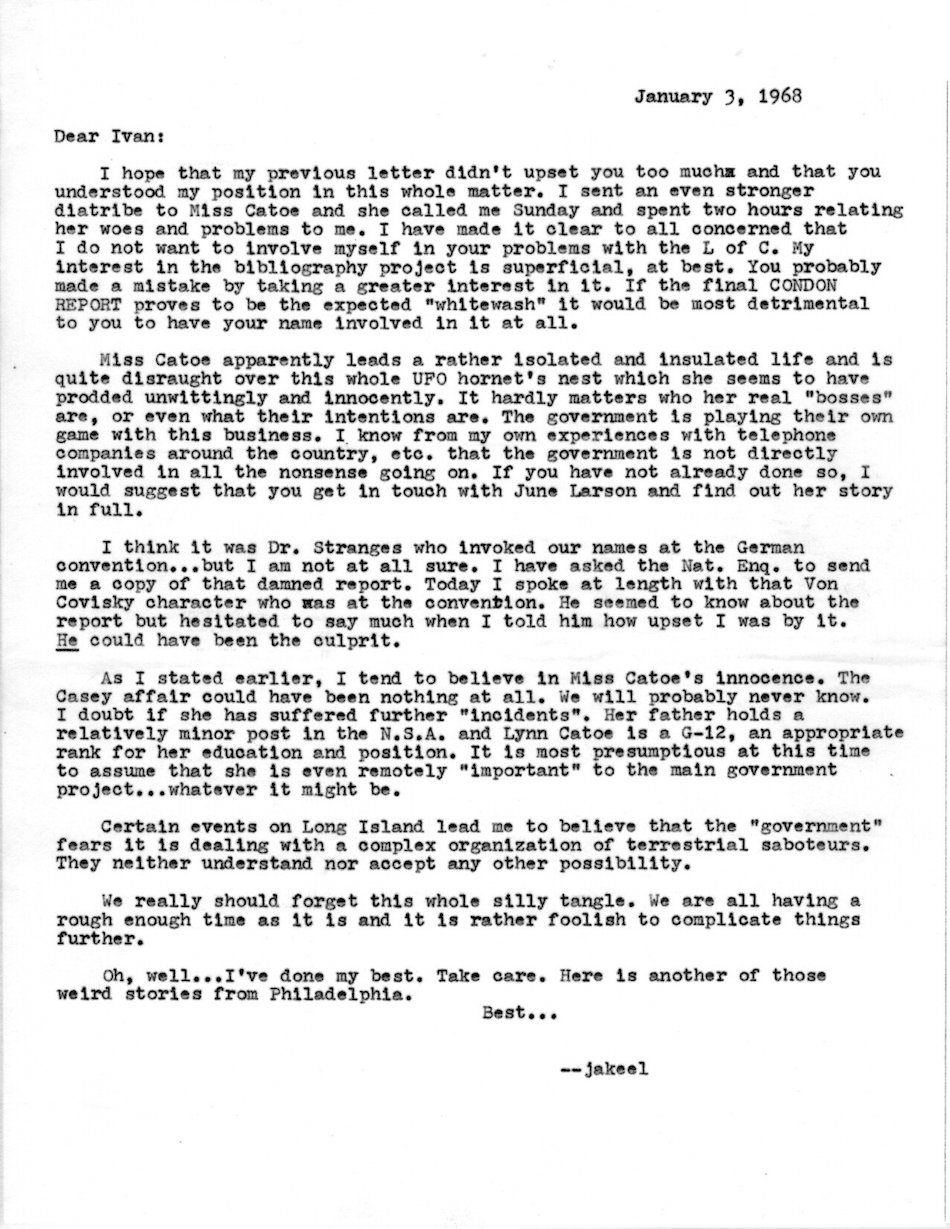Bormujos A few more letters have passed, of a purely personal nature. Lynn Catoe returns to professional, or at least ufological, matters, in this letter. She discusses some reactions to the Colorado Project, whose findings were soon to be published as the Condon Report. She also reports on her conversations with James McDonald. He was one of the casualties of the UFO culture of the ’60s: a physicist whose interest in UFOs led to academic stigmatization, public ridicule, marital difficulties, and eventually suicide in 1971.
August 11, 2020
A Letter from Lynn Catoe, January 31, 1968
August 5, 2020
A Letter to Lynn Catoe, January 29, 1968
Well, nature is running its course, and Lynn Catoe has invited John to dinner in her apartment. So, his letter is both a response to her letter about the Gordon Evans case and to her invitation. I’ll cut the more personal paragraphs, and just post the former. He describes some of William Donovan’s erratic behavior, and adds an interesting note on the need for better terminology in ufology. “Tamper,” by the way, is a term popularized by Richard Shaver, for interference by the deros and their ray machines.
July 28, 2020
A Letter from Lynn Catoe, January 19, 1968
Lynn Catoe, in her official capacity as bibliographer, replies to John’s letter about the Gordon Evans case. Evans certainly sounds like a troubled soul, but I haven’t been able to find anything on the Funt sighting or his investigation of it. Maybe it’s less of a mystery to some of the readers out there.
July 23, 2020
A Letter to Lynn Catoe, January 16, 1968
As the Catoe-Keel correspondence developed, it became more flirtatious, with each teasing, provoking, and shocking the other. All probably fun for both of them, but none of our business, so I’m omitting those letters. Here, though, John writes her in her official capacity to summarize “the Gordon Evans affair.” William Donovan was a member of NICAP; I can’t identify Robart.
July 14, 2020
A Letter from Lynn Catoe, January 10, 1968
I’m omitting some of John’s correspondence with Lynn Catoe, since it’s more personal than professional. However, this letter asks some interesting and pointed questions about John’s goals and methods in ufology. He gives the Gordon Evans story in detail in an upcoming letter; in brief, the ufologist Gordon Evans became frightened and abandoned his research. Operators and Things is a vivid memoir of schizophrenia by Barbara O’Brien (probably a pseudonym): the Operators are controlling voices, the Things their helpless victims. The book was much discussed at the time.
July 3, 2020
Eleven Years
John Keel died eleven years ago, on July 3, 2009. I don’t know who took this photo, but I assume debauchery was involved.
The best way to remember John is to read his books. During the pandemic, people have been posting “shelfies,” so I’ll follow suit with a shot of my Keel shelf. Stay safe, Keel fans.
June 30, 2020
A Letter to Lynn Catoe, January 5, 1968
John writes Lynn Catoe, again bemused at finding himself in the middle of a spat between her and Ivan Sanderson. He also offers an interesting assessment of Gray Barker, observations on strange voices on shortwave, and his usual exasperation at his fellow ufologists.
Some notes: Irving Stone wrote several biographical novels, including books about Michelangelo, Van Gogh, Freud, and Darwin; Richard Gehman wrote many biographies and magazine pieces about entertainers. Aimé Michel was a ufologist who had predicted “trouble in the U. S. S. R.” Edward Condon and Robert Low headed the University of Colorado UFO Project, which published its findings later that year.
June 24, 2020
A Letter from Ivan Sanderson, January 4, 1968
Ivan Sanderson replies to John’s last letter in his usual inimitable ebullient style. He’s still annoyed about the article that almost made it into the National Enquirer, but John has apparently convinced him that he shouldn’t be annoyed with Lynn Catoe. His hint about releasing “material that I have not discussed even with you” is provocative, and we can all certainly sympathize with his exasperation with ufology. Richard Hall, by the way, was on the board of the National Investigations Committee on Aerial Phenomena; Peter Kamitchis was on the board of the Society for the Investigation of the Unexplained.
June 9, 2020
A Letter from Lynn Catoe, January 3, 1968
Lynn Catoe writes John on January 3, 1968; the wrong date is a common typo in early January. She discusses the continuing kerfuffle with Ivan Sanderson, defending herself and objecting to John’s characterization of her. She reports on a rumor from French ufologist Aimé Michel about Soviet UFO propaganda. She also asks John’s advice about a proposed visit to Gray Barker; Monka was a supposed channeled alien, and Phillip Rodgers an early experimenter with electronic voice phenomena. Eileen Buckle, Gordon Creighton, and Charles Bowen were all British ufologists, contributors to Flying Saucer Review.
June 2, 2020
A Letter to Ivan Sanderson, January 3, 1968
John and Lynn Catoe exchanged a few more letters, in which he advises her to avoid ufology, she says she’s glad she knows him, and they discuss their long phone calls. I’ll skip them, since they’re getting more flirtatious, which is none of our business. John then wrote Ivan Sanderson again, trying to assure him that Ms. Catoe was not part of some nefarious government scheme, and speculating that Dr. Frank Stranges was responsible for the stories in the aborted National Enquirer article.
June Larson was an industrious ufologist, who supplied John and other researchers with clippings. I don’t know who “that Von Covisky character” was. G-12 was Ms. Catoe’s rank in the civil service: quite respectable but not ”important” enough to alarm Sanderson. John apparently sent Sanderson a clipping about Philadelphia, which he didn’t keep with the carbon.
